Analysts: NRO contracts will have long-term ripple effects on satellite imagery industry
Wednesday, 01 June 2022 15:26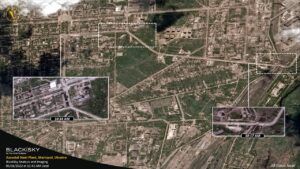
The contracts recently awarded by the National Reconnaissance Office to BlackSky, Maxar Technologies and Planet Labs will likely reshape the imagery market, says a new report from Quilty Analytics.
The post Analysts: NRO contracts will have long-term ripple effects on satellite imagery industry appeared first on SpaceNews.
Looking ahead to Webb’s first images
Wednesday, 01 June 2022 14:00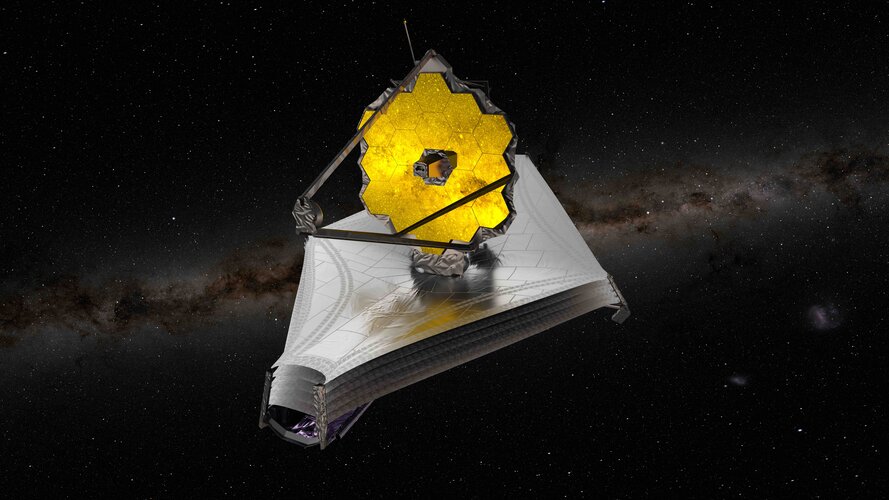
The NASA/ESA/CSA James Webb Space Telescope will release its first full-colour images and spectroscopic data on 12 July 2022.
Arianespace narrows Vega C and Ariane 6 maiden flight windows
Wednesday, 01 June 2022 13:35
Arianespace plans to conduct the maiden flight of Vega C and Ariane 6 rockets in “the first week of July” and “towards the end of the year,” respectively, a senior executive said June 1.
Euclid gains solar power and protection
Wednesday, 01 June 2022 12:53 Video:
00:02:54
Video:
00:02:54
Spacecraft are not so different to humans – whilst the Sun can be a great source of vital energy, both people and machines must also be protected from its harmful effects.
In this video, engineers at Thales Alenia Space in Turin are attaching a combined sunshield and solar panel module to the main body of ESA’s Euclid spacecraft. This process took place on 23 May 2022 and lasted an entire day.
The module has two functions: whilst the solar panels will provide the spacecraft with power, the sunshield will shade the instrument-carrying payload module from
Avio Q&A: Powering the growth trajectory
Wednesday, 01 June 2022 12:22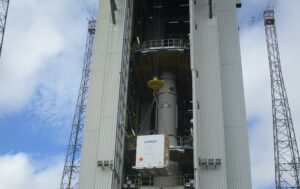
SpaceNews interviews Avio CEO Giulio Ranzo as the rocket maker is just weeks away from Vega C’s debut. Avio is also ramping up production of boosters to meet Amazon’s colossal Ariane 6 order, and could potentially accelerate the development of the next-generation Vega E as Russia’s war in Ukraine threatens suppliers.
NASA eyes November for launch of NOAA's JPSS-2
Wednesday, 01 June 2022 11:31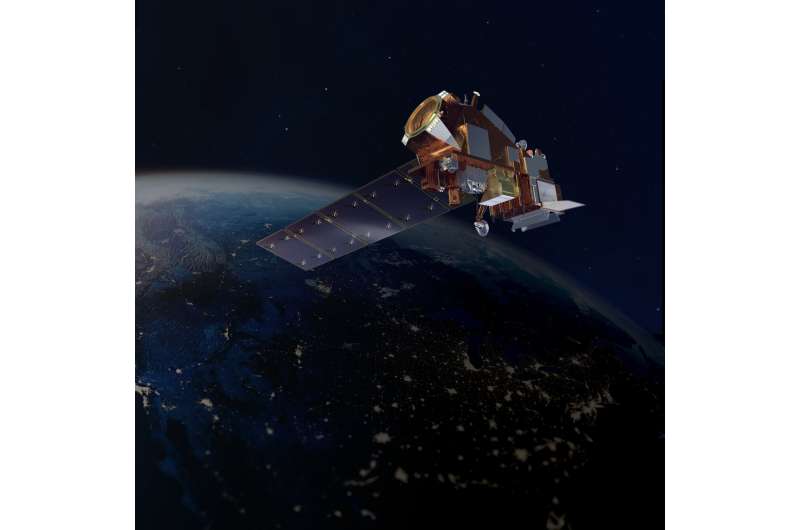
NASA and the National Oceanic and Atmospheric Administration (NOAA) are now targeting Nov. 1, 2022, as the new launch date for NOAA's Joint Polar Satellite System-2 (JPSS-2) satellite mission. During recent tests of a key instrument designed to collect visible and infrared images, the team found and corrected an issue, which resulted in additional time needed to complete thermal vacuum testing.
The Visible Infrared Imaging Radiometer Suite instrument, or VIIRS, experienced a test equipment issue during thermal vacuum testing. Engineers determined the issue was the result of the movement of test equipment caused by temperature fluctuations during the test. After modifying the test set up, the team retested the system, and it demonstrated excellent performance.
JPSS-2, the third satellite in the Joint Polar Satellite System series, is scheduled to lift off from the Vandenberg Space Force Base in California, on a United Launch Alliance (ULA) Atlas V rocket.
Mitsubishi Electric develops innovative laser comms terminal
Wednesday, 01 June 2022 10:53 Mitsubishi Electric has developed the prototype of what is believed to be the world's first* optical receiver for use in laser communication terminals (LCTs), that integrates space optical communication using laser beams and a function to detect the direction of received beams in the 1.5-um band, a general-purposeband used for terrestrial optical fiber communications and other applications.
Mitsubishi Electric has developed the prototype of what is believed to be the world's first* optical receiver for use in laser communication terminals (LCTs), that integrates space optical communication using laser beams and a function to detect the direction of received beams in the 1.5-um band, a general-purposeband used for terrestrial optical fiber communications and other applications. Startups raise millions for lunar rovers and asteroid mining
Wednesday, 01 June 2022 10:53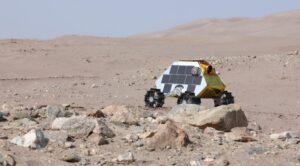
Two startups recently raised a combined $25 million in seed rounds to advance plans for lunar and asteroid missions, showing continued interest in space startups despite broader market uncertainty.
The post Startups raise millions for lunar rovers and asteroid mining appeared first on SpaceNews.
ESA conducts first tests of exoplanet hunter Plato in space-like conditions
Wednesday, 01 June 2022 08:20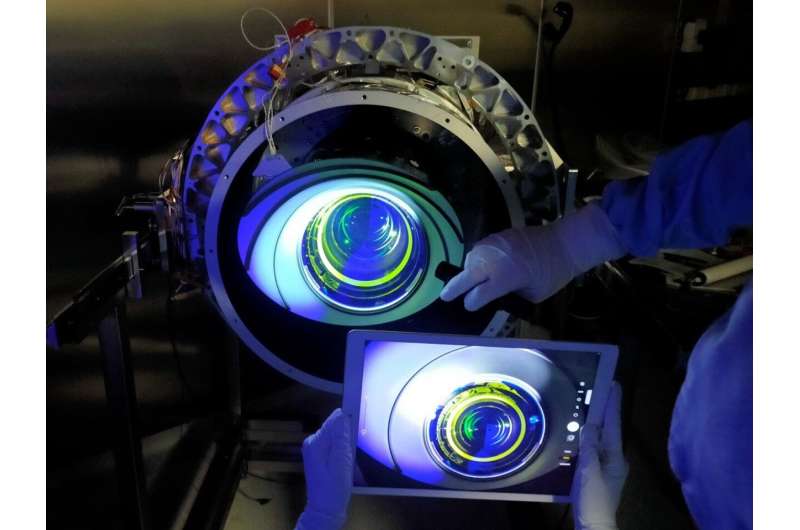
Planetary Defense exercise uses Apophis as Hazardous Asteroid Stand-In
Wednesday, 01 June 2022 06:52 Watching the skies for large asteroids that could pose a hazard to the Earth is a global endeavor. So, to test their operational readiness, the international planetary defense community will sometimes use a real asteroid's close approach as a mock encounter with a "new" potentially hazardous asteroid. The lessons learned could limit, or even prevent, global devastation should the scenario play o
Watching the skies for large asteroids that could pose a hazard to the Earth is a global endeavor. So, to test their operational readiness, the international planetary defense community will sometimes use a real asteroid's close approach as a mock encounter with a "new" potentially hazardous asteroid. The lessons learned could limit, or even prevent, global devastation should the scenario play o Perseverance now selects its own targets to zap
Wednesday, 01 June 2022 06:52 Perseverance has continued into Hawksbill Gap, making remote sensing observations of small portions of outcropping rock layers in search of a good place to collect a sample. Since Perseverance is in the Shenandoah quadrangle, we are using target names from Shenandoah National Park.
Some of the names this past week included "Bald_Face_Mountain," "Little_Devil_Stairs," "Sunset_Hill," "Luck_H
Perseverance has continued into Hawksbill Gap, making remote sensing observations of small portions of outcropping rock layers in search of a good place to collect a sample. Since Perseverance is in the Shenandoah quadrangle, we are using target names from Shenandoah National Park.
Some of the names this past week included "Bald_Face_Mountain," "Little_Devil_Stairs," "Sunset_Hill," "Luck_H Asteroid Institute uses cloud-based astrodynamics platform to find and track asteroids
Wednesday, 01 June 2022 06:52NASA Moon Rover practices tricky drive off Lunar Lander
Wednesday, 01 June 2022 06:52 Once it arrives at the Moon's South Pole, NASA's Volatiles Investigating Polar Exploration Rover (VIPER) will need to perform one of the trickiest parts of its 100-day mission: driving off the Astrobotic Griffin lunar lander and onto the Moon's surface. After another successful round of testing this "egress" activity, VIPER is one step closer to being ready for launch.
VIPER has already co
Once it arrives at the Moon's South Pole, NASA's Volatiles Investigating Polar Exploration Rover (VIPER) will need to perform one of the trickiest parts of its 100-day mission: driving off the Astrobotic Griffin lunar lander and onto the Moon's surface. After another successful round of testing this "egress" activity, VIPER is one step closer to being ready for launch.
VIPER has already co A steep but short climb: Sols 3491-3492
Wednesday, 01 June 2022 06:52 Today in tactical planning I was staffed as Surface Properties Scientist, which means I get to put my geology field experience hat on and work with the rover drivers to assess the terrain we'll cross in our upcoming drive.
We'll crest onto a plateau in today's drive, but before we do, we have to finish climbing a small but steep slope. The topography today actually reminds me a little bit
Today in tactical planning I was staffed as Surface Properties Scientist, which means I get to put my geology field experience hat on and work with the rover drivers to assess the terrain we'll cross in our upcoming drive.
We'll crest onto a plateau in today's drive, but before we do, we have to finish climbing a small but steep slope. The topography today actually reminds me a little bit Gemini North Telescope Helps Explain Why Uranus and Neptune Are Different Colors
Wednesday, 01 June 2022 06:52 Astronomers may now understand why the similar planets Uranus and Neptune are different colors. Using observations from the Gemini North telescope, the NASA Infrared Telescope Facility, and the Hubble Space Telescope, researchers have developed a single atmospheric model that matches observations of both planets. The model reveals that excess haze on Uranus builds up in the planet's stagnant, sl
Astronomers may now understand why the similar planets Uranus and Neptune are different colors. Using observations from the Gemini North telescope, the NASA Infrared Telescope Facility, and the Hubble Space Telescope, researchers have developed a single atmospheric model that matches observations of both planets. The model reveals that excess haze on Uranus builds up in the planet's stagnant, sl 
